Kanji for “Closed” and “To Close”: 閉 (to-jiru / shi-meru)
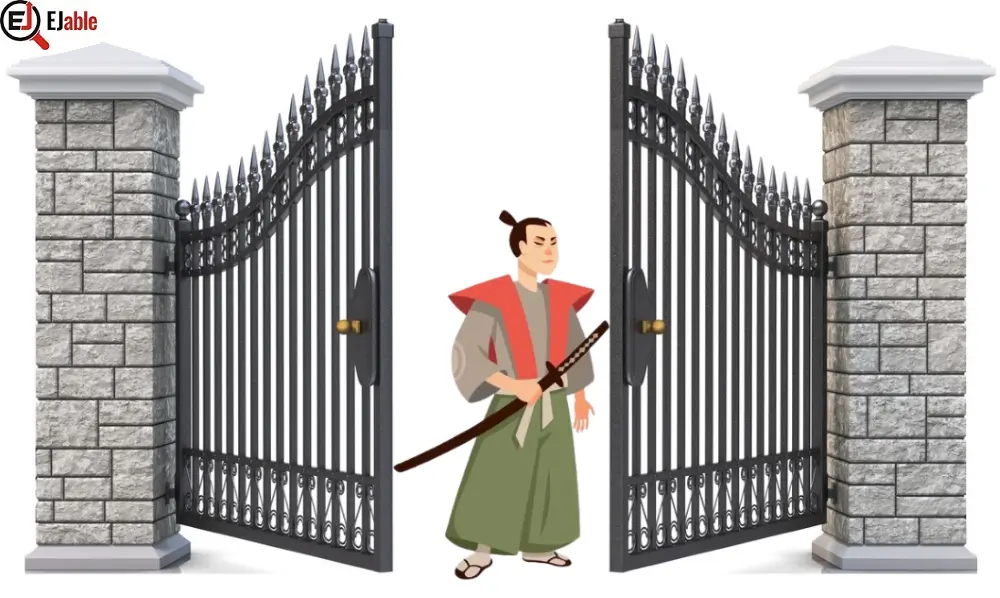
The Japanese kanji for “Close” (“shut”) or “to close” is 閉.
The kun’yomi (Japanese reading) pronunciation of the Kanji 閉 is “to” (と), as in words “to-jiru” (と-じる) “to-zasu” (と-ざす) “shi-meru” (し-める). The on’yomi (Chinese reading) pronunciation of 閉 is “hei” (ヘイ).
閉 is used in 58 Japanese names, and in names, it is pronounced as “he” (ヘ).
The Kanji 閉 is constructed with 11 strokes. It is part of the JLPT N4 syllabus (please check the list of JLPT N4 Kanji). In Japanese schools, this Kanji is taught in grade 6.
Origin of the Shape 閉
If we see the ancient Bronze inscription of the Kanji 閉, it shows a gate or door with a cross-shape below it. This cross-shape can be interpreted as a blocker or weir to block and regulate the flow of water if we consider the gate as an entrance or barrier.
However, the modern shape of the Kanji 閉 is composed of two parts:
- the gate radical 門 (meaning “gate” or “door”)
- 才 (meaning “talent” or here symbolizing something which has the ability to stop or close)
Let’s see the evolution of the shape of the Kanji 閉 from ancient times to the current:
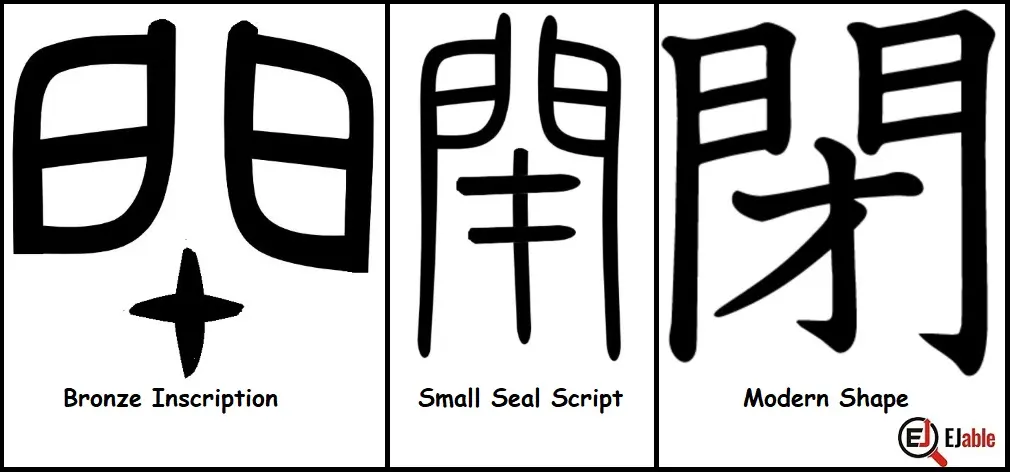

The above image shows the historical shapes of 閉 in Bronze Inscription, small seal script, and how we write it in the present.
Mnemonic: How to Remember the Kanji for “To Close” (閉)
The logic presented above about the combination of door and talent or ability may lead to confusion in relating the shape 閉 to “closing” or “shutting”, and therefore the following illustration can serve as a mnemonic to remember this Kanji:
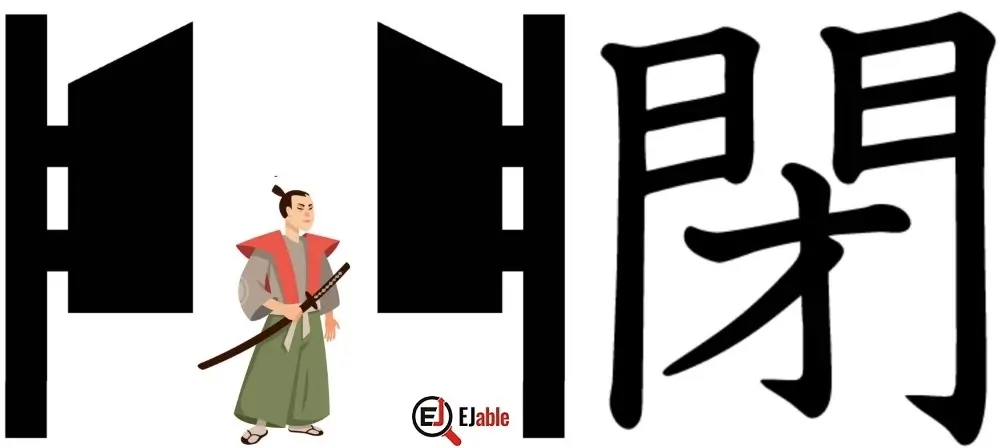

In the above illustration, imagine a guard or soldier with a sword to prevent the entry of intruders, effectively closing the entry.
Stroke Order for the Kanji 閉
The following illustrations show the order of the 11 strokes to write the Kanji 閉:
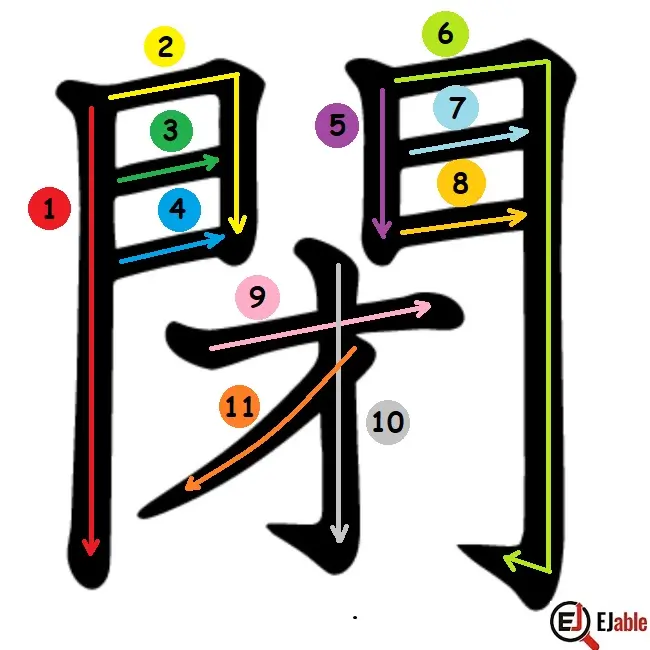

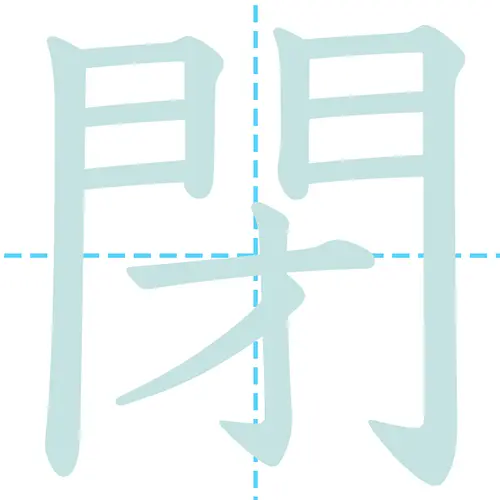

Other Meanings of the Kanji 閉
Beyond its primary meaning of “to close” or “shut,” 閉 carries several additional meanings as follows:
- Secrecy or Privacy: In some contexts, 閉 can imply the act of keeping something private, secret, or confined away from public view.
- End or Conclusion: 閉 can also symbolize the end or conclusion of an event or period, akin to closing a chapter or finishing an activity.
- Block or Obstruct: Additionally, it can denote the idea of blocking or obstructing passage, not just in the physical sense of doors and gates but also metaphorically, as in closing off a route or opportunity.
閉 Kanji in Compounded Words
There are 83 Japanese words that begin with the Kanji for “close” or “shut” (閉), and it appears in 124 words.
Examples of Kanji 閉 in Compounded Kanji Characters
- 閉店 (へいてん / heiten): Store closing; the act of closing a shop or store for the day or permanently.
- 閉鎖 (へいさ / heisa): Closure; shutting down or sealing off a space or facility.
- 閉会 (へいかい / heikai): Closing ceremony; the act of officially ending a meeting or event.
- 開閉 (かいへい / kaihei): Opening and closing; refers to the act of both opening and shutting something, indicating a mechanism’s functionality.
- 閉塞 (へいそく / heisoku): Blockage; the state of being closed off or obstructed.
- 閉口 (へいこう / heikou): Being at a loss; figuratively having one’s mouth closed due to surprise or confusion.
- 閉路 (へいろ / heiro): Circuit; in technology, referring to a closed circuit.
- 自動閉 (じどうへい / jidōhei): Automatic closing; a mechanism that closes automatically.
- 閉域 (へいいき / heiiki): Closed area; a specifically defined area that is closed off from access.
- 閉経 (へいけい / heikei): Menopause; literally translates to the closing of menstrual cycles.
- 閉幕 (へいまく / heimaku): Bringing down the curtain; a term used to indicate the end of a performance or event.
- 密閉 (みっぺい / mippēi): Hermetically sealed; making something airtight or completely closed off.
- 閉脈 (へいみゃく / heimyaku): Occlusion; in medicine, the closure or blockage of a blood vessel.
- 閉じ込める (とじこめる / tojikomeru): To confine; locking someone or something up within a space.
- 閉包 (へいほう / heihō): Closure; in mathematics, referring to the property of a set being closed under an operation.
- 防音閉 (ぼうおんへい / bōonhei): Soundproofing closure; creating a barrier that prevents sound from escaping or entering.
- 閉心 (へいしん / heishin): Closing one’s heart; emotionally shutting down or closing oneself off from others.
The above examples of compound words show the diverse applications of 閉 in Japanese, representing concepts related to closing, ending, sealing, and the physical or metaphorical act of shutting in various contexts.
Note: Check other Kanji characters on the page “How to Remember Kanji“. You may also like to read about the common Kanji radicals.


A long-term ex-pat in Japan, Himanshu comes with an IT background in SAP consulting, IT Business Development, and then running the country operations of an IT consulting multinational. Himanshu is the co-founder and Managing Director of ReachExt K.K. and EJable.com. He is also an Advisory Board Member of a Silicon Valley AI/IoT startup.

